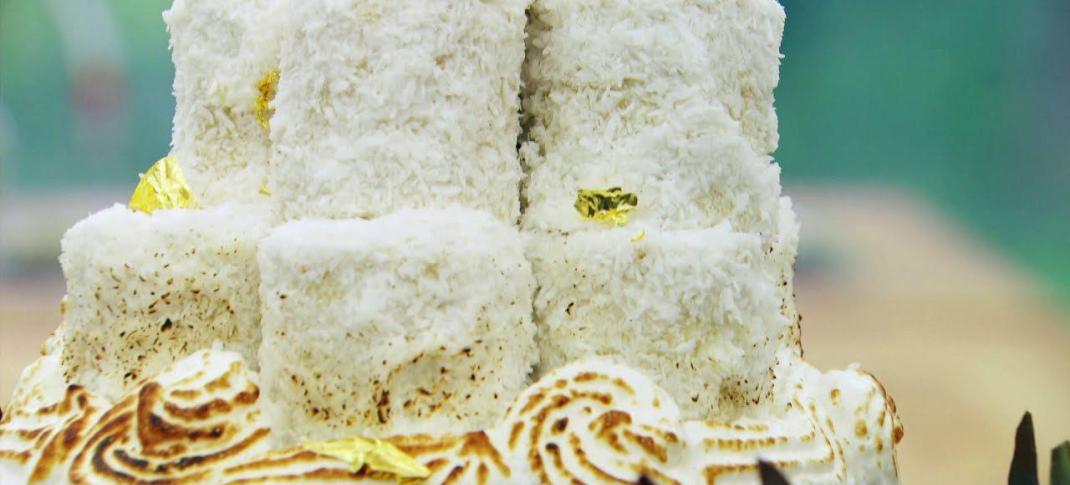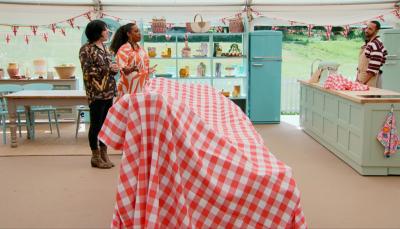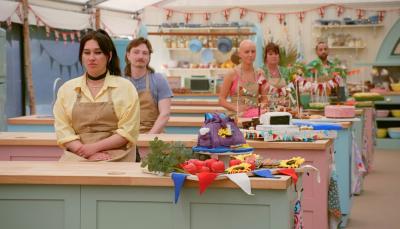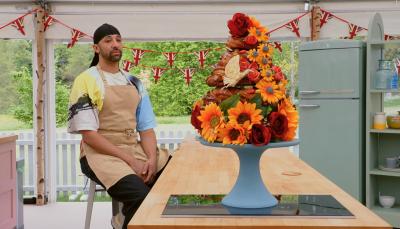Know Your GBBS History: Finals Week

Our latest series runs down the truth behind the popular bakes featured on The Great British Baking Show. This week: The Finals!
Finals Week
The Great British Baking Show has always ended with a tea party, though the size and scale of the parties have grown over the years it's been on the air. This was the first season where the party had grown to a size where a cake was assigned as the showstopper to serve guests, the prior two seasons the showstoppers were petit four trays. (This is partly why the petit four challenge was part of last week's semi-final.) Post Season 3, there would be a cake as the Finals showstopper all the way through to Season 7, when they did a "Royal Picnic" instead.
Pithivier
Think of this as the "something old" of the Finals challenge. The Pithivier is a French pastry made from two discs of puff pastry with a scalloped edge and spiral lines that are supposed to represent the sun. This is why the dish is sometimes referred to as the galette des rois ("Cake of the Sun").
The dish is named for the French town of Pithiviers, which is where the dish is assumed to originate. I say assumed because no one knows really. The cake's origins have been lost to history. All we know is that it is a cake associated with Epiphany and the Twelfth Night celebrations as far back as the 11th century and maybe even earlier.
Fondant Fancies
This is the "something new" part of the challenge. Fondant Fancies, or "French Fancies" as they were originally dubbed, were invented in the 20th century. They were introduced in 1967 as part of the first 20 baked goods created and sold to the brand new "supermarkets" by the Mr. Kipling corporation, makers of Mr. Kipling's Cakes in the U.K.
They're sort of a cheap mass-produced petit four, with a sponge cake base, a veggie oil faux buttercream and then draped in fondant. Like most mass-produced cakes, they come in snack packs for individual servings. The homemade versions are dubbed as "fondant fancies" and "french fancies" are a trademarked name.
Chiffon Cake
One of the lightest cakes known to man, the chiffon cake was invented in Los Angeles in 1927 by Harry Baker, who was looking for a "more substantial" version of the lightest cake of all, the Angel Food cake. His big innovation was to replace the heavy butter and shortening fats traditionally used in cake baking and replace them with vegetable oil, which at the time was thought of as "salad oil." He took his cake recipe to the Brown Derby Restaurant (also known for inventing the Cobb Salad around this era) and for 20 years, they were the home of this monster hit cake among the Hollywood elite.
In 1947, Baker sold the recipe to General Mills for a huge sum, who introduced the recipe to the post-WWII home cook as "the first new cake recipe in 100 years," and the cake became the 1950s and 60s staple cake of the baby boomer generation.
That's all for this season of The Great British Baking Show. Happy baking until next summer!




